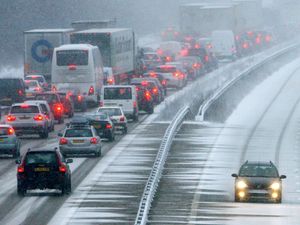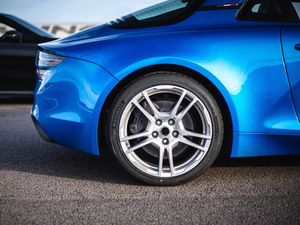What do I need to know about passing my motorcycle test: Module 2
What happens next in the journey of getting your full licence?

So you’ve nailed your theory test, gained your CBT and passed that all-important Mod 1 test, but what happens next in the adventure of getting your full motorcycle licence?
Unlike the car test, the practical motorcycle test is broken up into two sections. The first, which we looked at recently, is the Mod 1 and this covers more technical elements such as slaloms, u-turns and emergency stops. However, the Mod 2, which comes next, is the final part of gaining your full licence. Here, with some tips from Triumph UK, we’re going to take a look at what you need to know about it.
What do I need in place before I can do my Mod 2?

>
In order to undertake your Mod 2, you’ll need to have passed your Mod 1 first. You can’t take the Mod 2 without passing your Mod 1, so there’s no way of jumping ahead to try and do this section first.
In order to do your Mod 1, you’ll need a valid CBT certificate as well as confirmation that you’ve passed your theory test. You’ll need to bring the same documents to your Mod 2 test as well.
How long will the Mod 2 test take?
The Mod 2 test should take around 45 minutes from start to finish, but it’s worth giving yourself plenty of time to get to the test centre. It’s never a good idea to be rushing beforehand, so leaving yourself a bit more leeway can definitely help to make you feel more confident and settled before you head out.
How does the Mod 2 test start?
Things start pretty simply with the Mod 2 – you’ll be given an eyesight test. Much the same as with the car test, you’ll need to be able to read out a number plate on a car which is parked 20 metres away.
Providing that your eyesight is all clear, you’ll then be able to progress to the next section of the test.
‘Show me tell me’ questions

>
Knowing some basic mechanical and safety features of your motorcycle is essential. It’s why the Mod 2 test includes two ‘show me tell me’ questions, similar to the practical car examination. All of the questions that you could be asked are published on the Government website, so it’s easy to brush up on them beforehand.
Questions include locating the horn and sounding it, as well as indicating how you would check your motorcycle’s tyres, ensuring that they’re inflated correctly, have the right amount of tread and what their general condition is like.
Road riding

>
Once you’ve completed the eyesight test and your ‘show me tell me’ questions, it’s time to head out on the road. You’ll be accompanied by an examiner, who will be in radio contact with you in order to give directions and requests – though you won’t be able to speak with them. On some occasions, an instructor may follow in a car, but it’s most likely that they’ll also be on a motorcycle.
During this initial period, you’ll be asked to ride down a variety of different roads which might include single-lane sections of road and dual-carriageways, though not motorways. You might be asked to perform a usual stop at the side of the road, a hill start or even an angled start where you’ll need to pull out from behind a parked vehicle. During all of these, your examiner will be looking to see if you’re correctly performing shoulder checks (or ‘lifesavers’) as well as consistent mirror checks.
Independent riding

>
The independent riding section of the examination is there to show that you’re happy and confident to ride safely while making your own decisions. The instructor will give out directions over your radio link and you need to follow them while showing safe judgement and consistent safety checks.
Most instructors will tell you beforehand of a signal that you can give if you have not heard the instruction, though you cannot fail the test for going in the wrong direction. Providing that you’re safe and not breaking any speed limits, you cannot be penalised for going off-route.
Final verdict
Remember, the test continues right up until the point you switch the bike’s engine off and put it on the stand, so remember all of your checks to the very end of the examination. Once you’re all finished, your instructor will tell you whether you’ve passed or failed.
You’ll pass provided you have made no more than 10 riding faults – sometimes referred to as ‘minors’ – though if you make more than four of the same riding faults, this could turn into a ‘serious’ fault which would result in a fail. So if you failed to get your road positioning right that might be a minor fault, but do it three times more and this could change into a serious fault.
Even one serious fault would cause you to fail your test, while a dangerous fault – which would include actual danger to you, the examiner or the public – would usually cause the examiner to cut the test short.
What happens next?

>
If you’ve failed your test, your instructor will be able to talk through where you went wrong and how to improve for your re-test. You’ll need to book another test and it’ll have to be at least 10 working days away,
If you’ve passed, congratulations! If you’ve passed your A2-category licence, you’ll now be able to ride a restricted motorcycle with a power output of up to 35kW without L-plates. If you’ve passed your full A licence you’ll be able to ride any size, shape or power of motorcycle you like. If you want your licence to be automatically updated, you can hand it to your instructor to send off and a new one will be sent out to you with your updated details. You can still ride a motorcycle without it – just keep your pass certificate on you.





